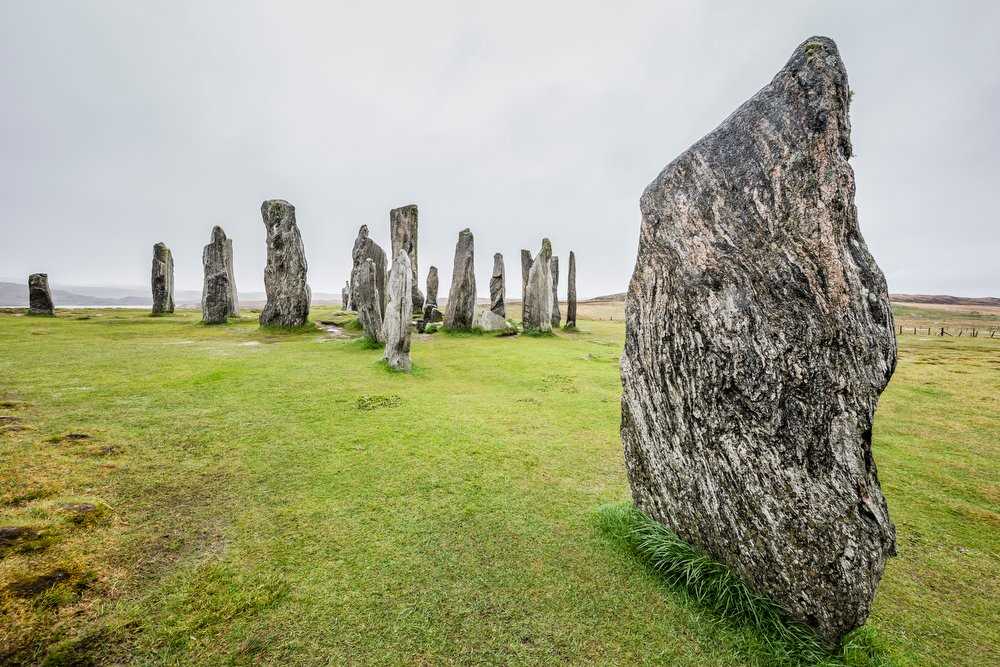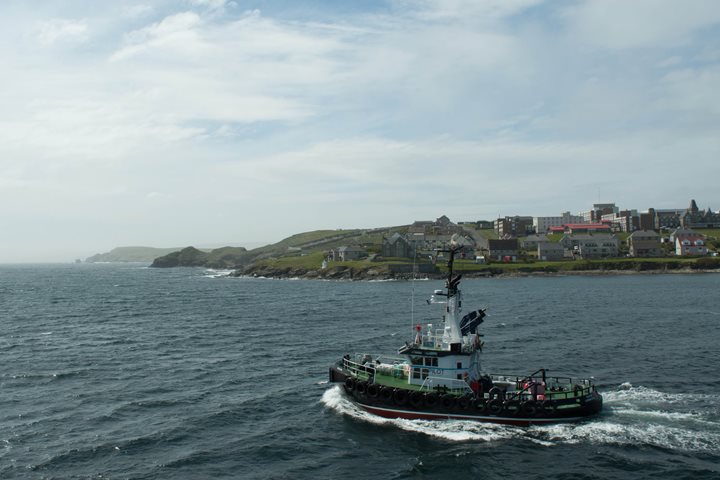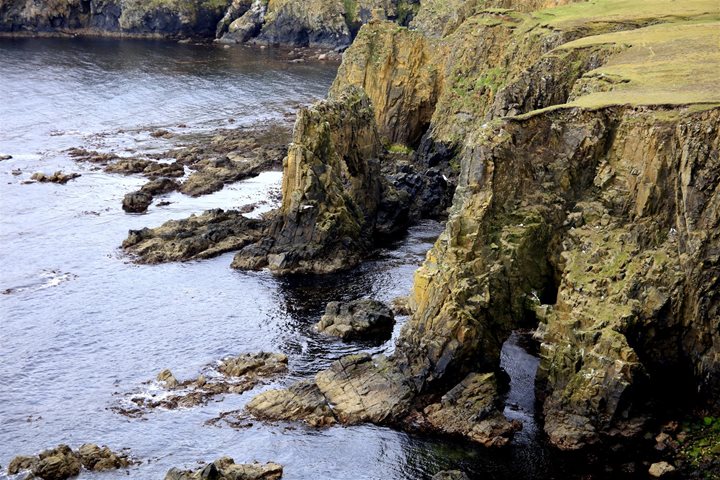Arriving on the Scottish mainland for the first time this voyage, our morning was well spent visiting one of Britain’s most famous gardens at Inverewe. It fame derives in large part from its northerly location at 57 degrees N, the same latitude as Labrador to the west and St Petersburg. At this forbidding northerly latitude the planting skills of Osgood Mackenzie – creating a windbreak by skillful tree and hedge planting was critical – and making use of the warming effects of the North Atlantic Drift have enabled a remarkable collection of rhododendron, azalea, camellia, bamboo and other exotics to flourish. There is even a productive vegetable garden with deep soil imported from Ireland that was much admired. We were met at the jetty by a team of enthusiastic gardeners who gave as an infectiously enthusiastic tour, specimen by specimen, allowing some recovery time at the Visitor Centre and adjacent Tea Room.
Over lunch the ship repositioned to Stornoway, the principal township of the Isles of Lewis in the Outer Hebrides, a stronghold of the Gaelic language and strict Calvinism, where secular hymns have not been sung since the time of the Highland Clearances and where singing in church is restricted to the Psalms. Neither is any instrumental accompaniment permitted, ‘secular’ hymns and instruments being disapproved of. The big tourist draw on the Isle of Lewis are the Stones of Calanais, one of the great megalithic monuments of Britain and Ireland but one the ‘pagan’ origins of which caused some controversy on the island when Historic Scotland revealed plans to open a Visitor Centre. Such monuments are either aligned to the solar or the lunar cycle, Calanais being lunar aligned. Both the solar and lunar cycles would have been of fundamental importance to the first agricultural peoples, settled agriculture having developed in the late Bronze Age and into the Neolithic periods, the time when these monuments were constructed. It is important to remember that the builders of these monuments shared out intellect even though they did not share our levels of technology. They doubtless had mathematic skills and a vast store of orally transmitted learning, even if the art of writing or the wheel had not yet been invented. There is no need to enter the realms of speculation that flourish on the lunatic fringe of archaeology at such sites: in the case of Calanais one recent author has suggested that the stones represent a prehistoric internet café with messages being sent south to cousins at Stonehenge along energy lines by prehistoric Scottish stone-huggers. Such speculation reveals more about our world than it does about the world of our ancestors! The site is hugely atmospheric, nevertheless, and added yet another ‘highlight’ to a voyage already crowded with them.








